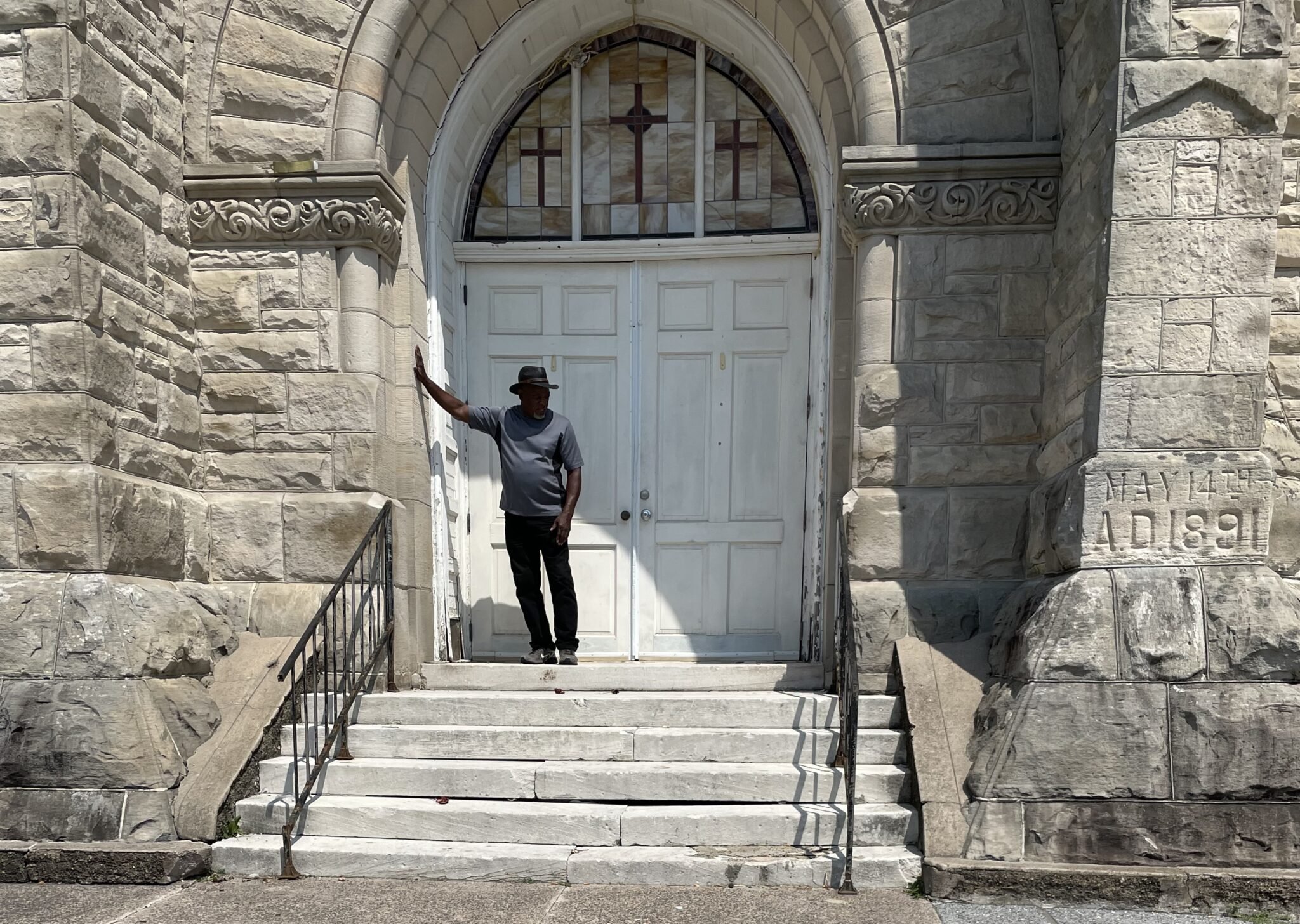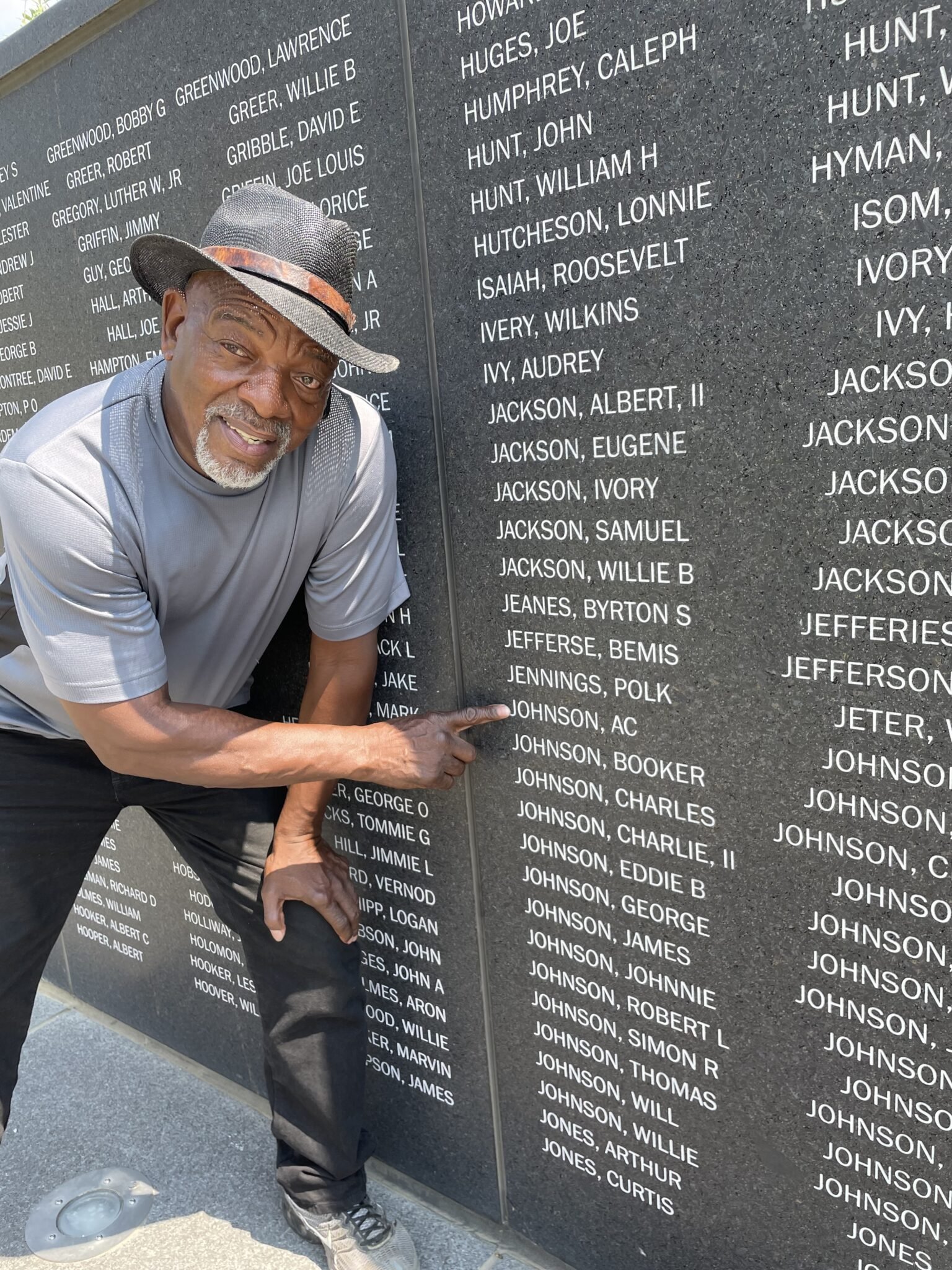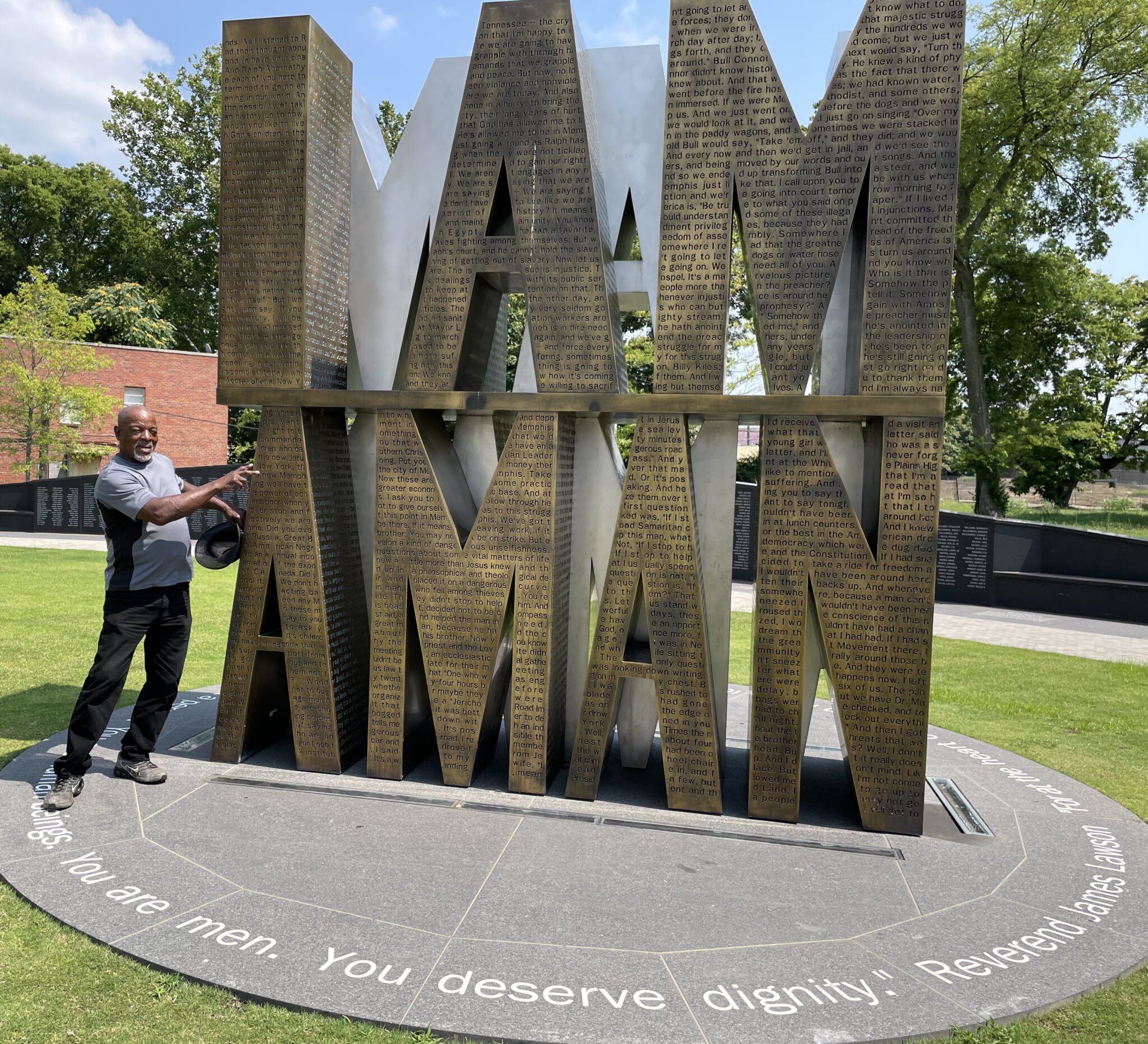I AM A MAN
The book DON’T CALL ME BOY; a Black Man’s Quest for Freedom, is the story of AC Johnson’s life, raised as a sharecropper in Mississippi. As a young man, AC marched with Martin Luther King for the rights of his people. AC has allowed me the honor of telling his story.
The first time we met, AC told me that his name is on the Memorial Wall, at the I AM A MAN PLAZA. I had never heard of this place, so AC enlightened me on the history and background of the Plaza, when we visited him in Memphis, TN.
The Plaza sits in a large lot, adjacent to Clayborn Temple, which was at the center of the 1960’s Sanitation Workers Rights Movement in Memphis, and was erected to commemorate the freedom marches and those who participated.
We parked in front of Clayborn Temple, on a day that was “Memphis hot.” I was surprised to find the church boarded-up and in disrepair, and the grounds overgrown and littered with trash, a common stop for vagrants. AC and I picked-up the grounds a bit, so I could get some shots of him at the church and on the Plaza.
He pointed proudly his name on the Memorial Wall. He posed at the large bronze and stainless steel sculpture that says, “I Am A Man.” At the base of the sculpture are these words:
“For at the heart of racism is the idea that a man is not a man. That a person is not a person. You are human beings. You are men. You deserve dignity.”
Reverend James Larson
AC explained how Clayborn Temple, was one of the churches where the sanitation workers met and organized, as they formed a union and began to advocate for their rights as workers. The “I AM A MAN” signs, carried by the sanitation workers during their marches, were created and printed by the pastor, Rev. Benjamin Booker.
The Black sanitation workers, union leaders, and pastors, (with the help of some in the white community) worked tirelessly to advocate for better and safer working environments and better pay, making little headway against a staunchly prejudice mayor, Henry Loeb, even when the men went on strike and garbage began piling up in the streets. When two men, Echol Cole and Robert Walker, were crushed by a malfunctioning garbage truck, during a rain storm, the plight of the sanitation workers caught the attention of Martin Luther King. After much consideration, King agreed to organize a march to help the men secure better pay, better equipment and safer working conditions.
March 28,1968 – The march brought hundreds of high school and college students who skipped school to take part. Sanitation Workers carried and wore the “I AM A MAN” signs, hoping this would be the march that would turn the tide.
A pro-violence group also joined in, without the knowledge of the organizers. King had assured the city that the march would be non-violent, but the violent agitators turned the march into a dangerous event. Despite the organizers’ best efforts, violence broke out as the march got underway. As store windows began breaking on Main and Beale streets, and angry shouts erupted, it became obvious that the march was becoming a riot.
King’s team whisked him to a nearby motel, fearing for his safety. Meanwhile, police, who were supposed to be protecting the marchers, began to attack them, using fire hoses, dogs, mace and billy clubs.
AC explained that the marchers were forced to flee back to the Clayborn Temple for safety, but many were beaten before they could flee. Police followed the marchers to the church, releasing tear gas into the sanctuary, clubbing people as they lay on the floor, gasping for air.
“Me and my auntie ran into the church, heading for the furthest back part, so when they started shooting tear gas, I managed to get one of the windows open and I climbed out. Then I helped her out of the window. We ran to some raggedy apartments behind the church. The peoples there was Black. They let us in they houses and kept the doors closed, until things died down. God seen fit to work that out for us,” AC explained.
In the downtown area, shops were looted by those promoting violence. The police unleashed their furry, as people were thrown and pushed through glass shop windows, dragged out of stores and beaten with billy clubs. A 16-year-old boy was shot and killed by the police. It seemed like all-out war on the streets of Memphis.
I’ve Been To the Mountaintop
On April 3, King returned to Memphis to speak to the sanitation workers. In that speech he talked about his own mortality. “Like anybody, I would like to live a long life – longevity has its place. But I’m not concerned about that now…I’ve seen the Promised Land. I may not get there with you. But I want you to know tonight that we, as a people, will get to the Promised Land.” In his Mountaintop speech, King’s remarks caused many to believe he somehow knew his time on earth was almost done.
The next day, April 4, 1068 at 6:01 P.M., Martin Luther King was shot, as he was standing on the balcony of the Lorraine Hotel. The country erupted into chaos, as radio and TV announced that the leader of the Civil Rights Movement was dead.
Fifty-three years later, I walked with AC through that memorial park and stood on the steps of the deserted church. I knew so little then. I had never heard about Clayborn Temple and the I AM A MAN Plaza. By the condition of the grounds, it would appear that many have already forgotten.
The lesson of the Civil Rights era, is that all men are equal and deserve equal dignity. It makes me very sad to think that lesson may be gained and lost in my lifetime.
As I read the Bible, I find that as a Christian, I am not only to ascribe dignity, but I am to consider others as better than myself, thinking of others first. Jesus demonstrated multiple times that he does not put any person above another. He is not a respecter of persons. “Lord, help me to treat others with your love, and to always love with dignity.”
May we always remember what brought us this far, and let us continue to learn to love each other well.


